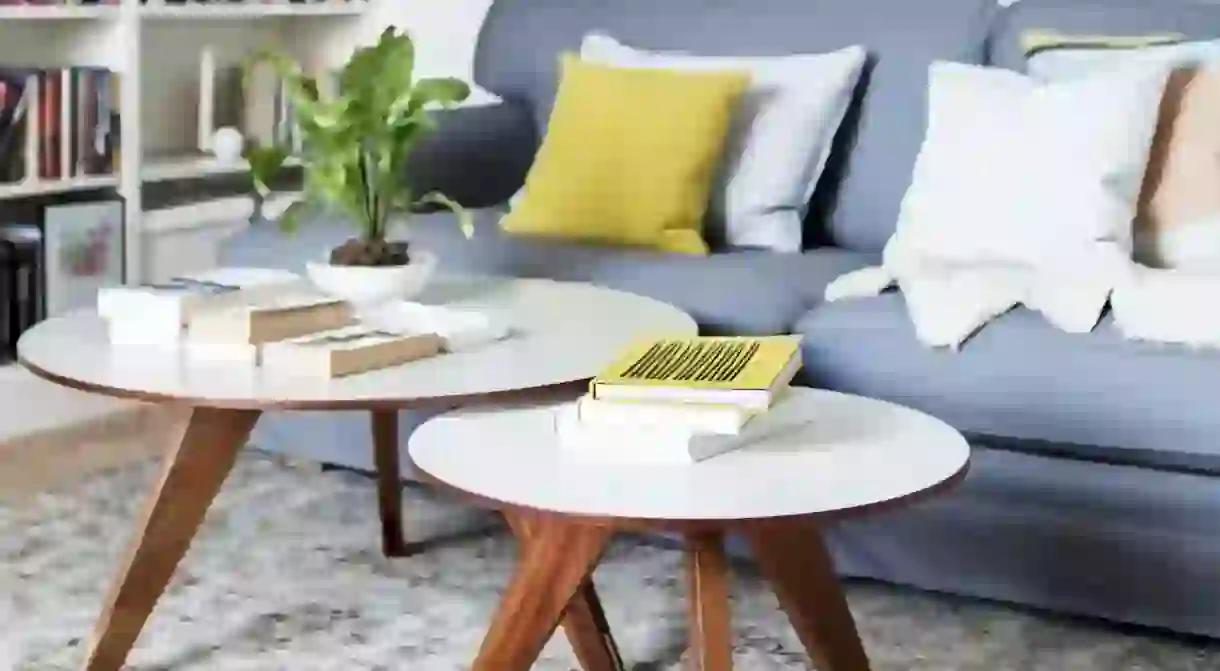Here's the Secret to Nailing the Scandi Style at Home

While Scandi style has become hugely popular, with the hygge trend taking off last year, the design movement actually began in the 1950s. It kicked off with a travelling exhibition in North America called ‘Design in Scandinavia’ and established the style we know and love today. We show you how to nail this timeless look with top tips from new book Scandinavian Style at Home.
Form and functionality
Scandinavian style is characterised by form, functionality, simplicity and clean lines. According to its design principles, one should be in harmony with one’s environment, and objects should be made to last rather than be replaced.
Easy living
Scandinavian style is all about having a flow that allows easy living in an open and airy setting. Opening up the living space also encourages clutter-free living, as you are more likely to maintain a tidy space when everything is on view. Opt for built-in furniture to create a streamlined look and dispose of unnecessary clutter. Only display those items that are modern and stylish. Store everything else to achieve a calm, stress-free atmosphere.

Key design pieces
To achieve true Scandinavian style, it is important to have at least one piece created or influenced by one of these designers: Alvar Aalto, Poul Henningsen, Arne Jacobsen, Borge Mogensen, Finn Juhl, Greta Magnusson-Grossman and Hans J. Wegner.
Remember that one of the key points in Scandinavian style is functionality: it is not only about looking good; your furniture needs to have function and should also be long-lasting.

Natural materials
In Scandinavian interiors, there is a strong relationship between design elements and nature. The richness of wooden boards or a perfectly handcrafted wooden chair speaks to Scandinavians. Natural materials like stone, wood, leather and linen are used thoughtfully in most home interiors.
The critical component is to keep the tones of the materials within a similar colour range. Otherwise, the use of varied materials will clutter the space and make it feel fussy, which is the opposite of what the design scheme is attempting to achieve.
Neutral colours
Pure, simple and restful colours have become the trademark of Scandinavian design and seem to be one of the main reasons for its global popularity. Think white, beige and grey, and pale and dusky tones. These colours are unique to Scandinavian minimalism – especially the combination of grey and beige, which is not often seen elsewhere in minimalist designs.

Prints and patterns
Don’t get carried away when choosing colours and prints; just one wall with a beautiful hand-painted wallpaper, or a cushion with a fun, patterned print on a grey couch, works well.
Recognised patterns also work, such as the iconic blue-and-white chequered Hästens bed, Marimekko’s classic poppy print ‘Unikko’ or the colourful patterns in one of the many throws from Norwegian brand Røros Tweed.
Simple, yet cosy
It is impossible to talk about Scandinavian style without mentioning hygge. Originally a Norwegian word meaning ‘well-being’, hygge first appeared in Danish writing in the 18th century. There is no perfect translation, but it roughly translates as cosiness.
The harsh Nordic climate and long, dark winters have created the need for its inhabitants to fully enjoy those everyday moments by turning their homes into havens. A welcoming sanctuary for connecting with loved ones, but also a cocoon providing calm and stillness after a busy day. In other words, a home filled with the spirit of hygge.

Floor-to-ceiling wood
Scandinavian style uses hardwood for floors and wall panelling. Often the wood is used floor-to-ceiling, which helps to give the impression of a larger space, by bringing in more light. Variations on this style use pale-coloured wood such as pine or birch that help to reflect light, to give rooms a spacious feel.
Windows
Keeping window decoration to a minimum reflects the sentiment of inviting in as much light as possible. In Scandinavian-style homes, it is rare to have coverings over the windows. If there were a need to have something to cover the window, it would be preferable to use light fabrics such as linen and sheers.

Multiple light sources
In Scandinavia, it is rare to have a single light source in any room, such as overhead spotlights. Instead, you are likely to find well-thought-out pendant lights, combined with floor and table lamps. Spotlights, if used at all, are on dimmer switches. Candles are essential to a true hygge atmosphere – try scented-candle companies like Swedish Byredo or Danish Skandinavisk.
Old and new
Scandinavian style, especially when it comes to the accessories, is a bit more open to showing your own personality. Mixing new with old is perfect, and even better if some of your collection has a story to tell: perhaps something passed to you by your grandmother, or an item you found in a flea market on holiday.














